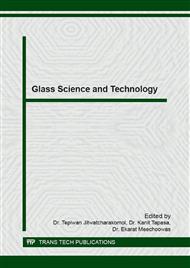p.108
p.113
p.121
p.125
p.130
p.135
p.139
p.145
p.150
The Longitudinal Cutting on Hollow Glass Cylinders
Abstract:
This paper presents experimental data and discussions concerning “Elastic Working” which exploits the cutting of hollow glass cylinders at the longitudinal section. Here, “Elastic Working” indicates the cutting method for glass or ceramics using natural cracks occurring at the fracture points of brittle materials. “Elastic Working” has the significant characteristics that the amount of energy required is very small, the time required is very short, and so on. Hollow cylinders made of Pyrex glass were used in the cutting experiment. Using the presented cutting method, the hollow cylinders could be cut instantaneously at the desired longitudinal section. The experiment to examine the cutting load of the hollow cylinder was tried using brittle plaster material as well as glass. It was found that the cutting load of the hollow cylinder was consistent with the load determined from the radial crushing strength on “Sintered metal bearing”.
Info:
Periodical:
Pages:
145-149
Citation:
Online since:
July 2016
Authors:
Keywords:
Price:
Сopyright:
© 2016 Trans Tech Publications Ltd. All Rights Reserved
Share:
Citation:


